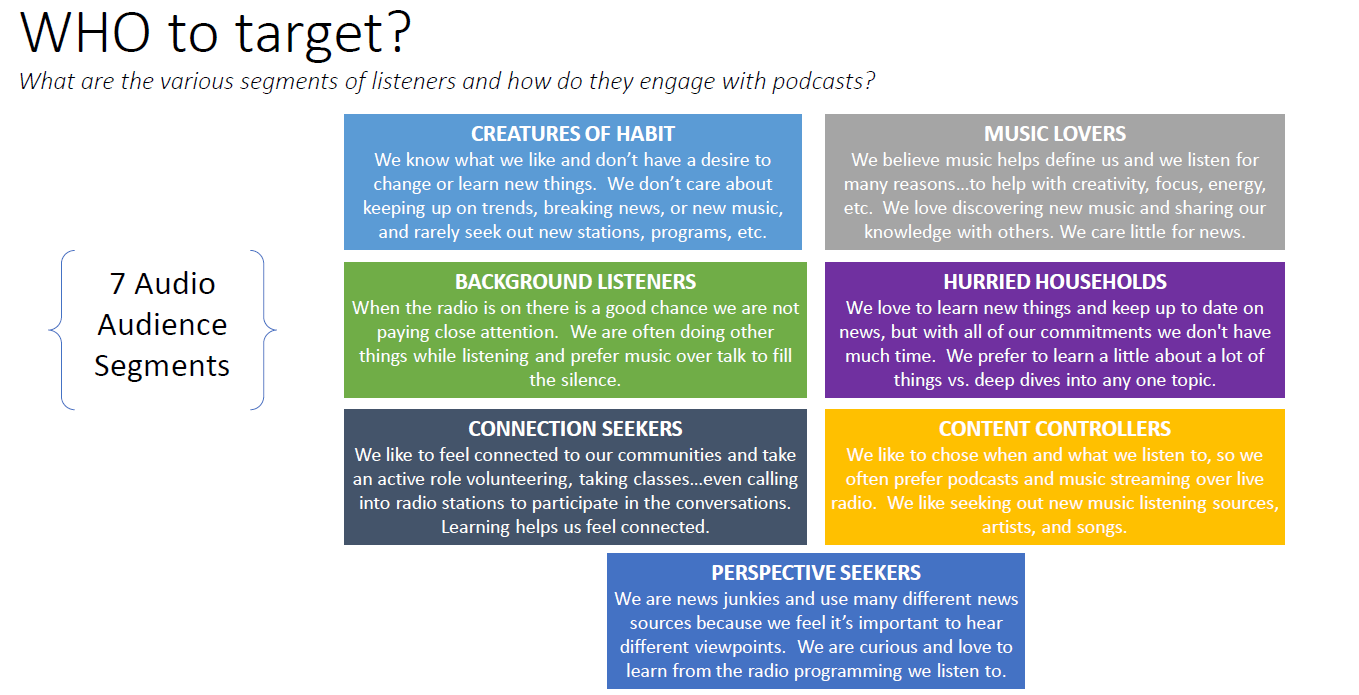Related Articles
Subscribe to the Greater Public newsletter to stay updated.
This site is protected by reCAPTCHA and the Google Privacy Policy and Terms of Service apply.
Making up imaginary people may seem like a childhood game long forgotten, but media companies across the country are using the practice to help guide their work.
The idea behind audience personas or audience visioning exercises is to use a fictional person who is based on data and insight to guide product or project development. Check out this basic example created to think through a public radio website user:

Audience personas can help you think through audience needs and wants, so the end story (or project, or email, or membership drive segment) better resonates with the audience it is intended to reach.
In 2020, NPR included audience ‘segments’ as a major part of their research into news consumer behavior, identifying six types of users. Using audience research, NPR was able to create and name six segments that speak to different types of audience members with a particular set of consumption and platform preferences.
If you or your station hasn’t used audience personas before, it may make sense to start with some of the personas developed by NPR, and seeing if your content and services meets the needs of those personas. (Those with access to NPR Audience Research can find the personas under Management Resources > Research Home > Public Radio Audience).
At American Public Media (APM), they used audience visioning to guide their podcast innovation process. Their work, titled Project Compass, gave needed insight into the needs and wants of their audiences, leading to a roadmap for developing new podcast products.
Using a quantitative audience persona segmentation, APM identified key personas that will be most important to their future growth.

They also used a Jobs-to-Be-Done framework to imagine audience needs, and the best ways to meet those needs. This leads to focusing on audience needs first, rather than the podcast or project.
“One podcast is not going to serve all types of listeners or fulfill all needs,” says Danielle Gutzmer, managing director of audience insights & analytics for APM.
“You’ve got to pick,” she adds. “If you don’t pick, you aren’t serving anyone well.”
In addition, Gutzmer says using audience personas helped APM align across departments, setting a strategy and direction that is unified. All departments understand the target audience and are clear on their role in serving those audiences or selling those audiences.
“When you build these foundational personas [to understand] needs and problems, that is big work,” says Gutzmer.
To get started with personas at your station, consider this simple format:
Persona or audience name: Core Christopher, Fringe Fran, Gen-z Activists
Daily habits: Who is this person? How old are they? How do they spend their time each day? What are their needs and worries? How do they interact with their community?
News consumption behaviors: Where do they get news? How long do they read / listen? When do they read / listen?
Then, as you consider that new email newsletter you are creating to engage audiences in a younger demographic, pull up Fringe Fran and let her guide your decisions. If you are drafting email fundraising letters to non-members subscribed to one of your email newsletters, use personas to guide your language, images, timing and donation amount. Personas help you keep the audience at the center of your work, which will undoubtedly lead you to success.

New to Greater Public? Create an account.